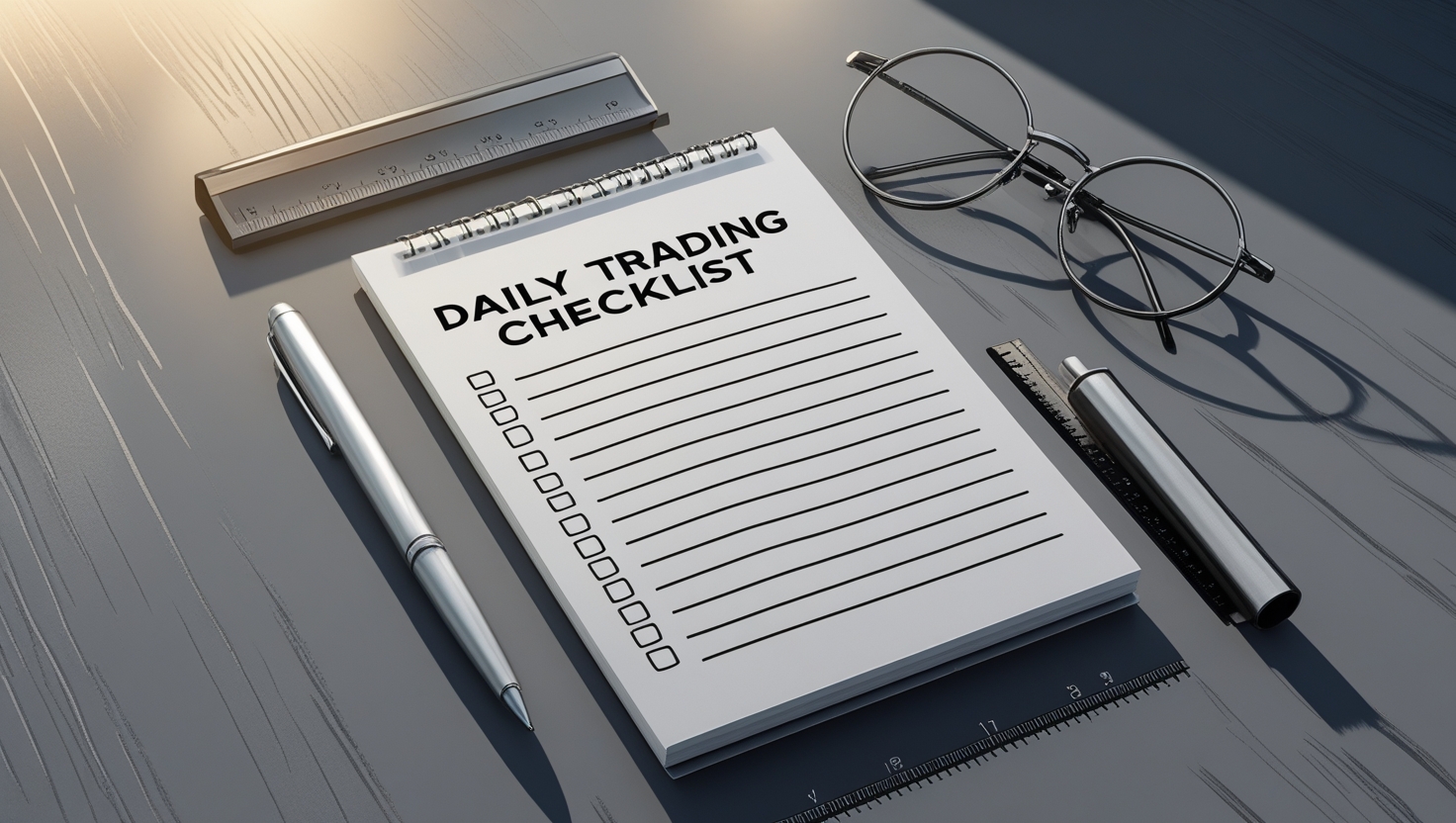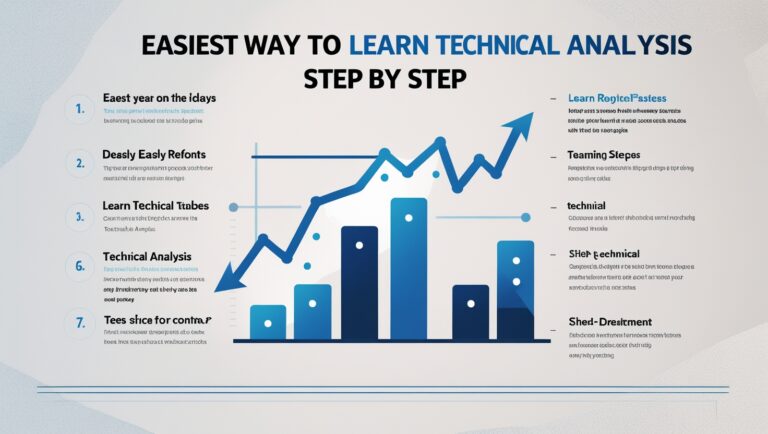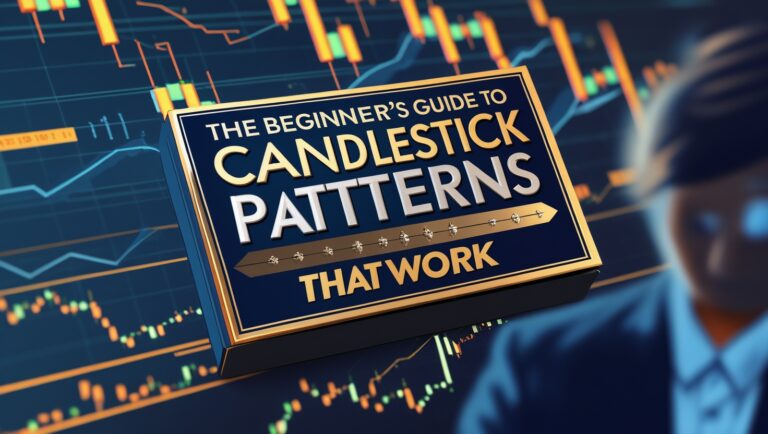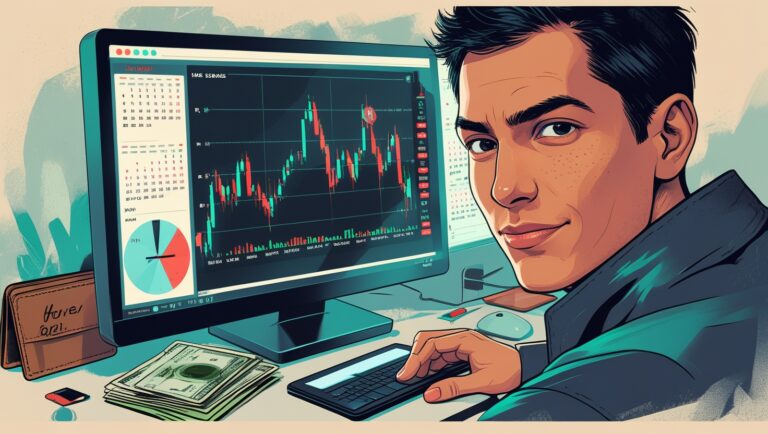The Daily Trading Checklist That Keeps Me Disciplined
The Daily Trading Checklist That Keeps Me Disciplined
If there’s one thing that helped me go from scattered and inconsistent to focused and profitable, it’s building a simple daily trading checklist. I used to wake up, open my charts, and just “see what’s moving.” That lack of structure cost me real money — and time. Once I created a routine to follow step by step, I became more consistent, more confident, and more in control of my trades.
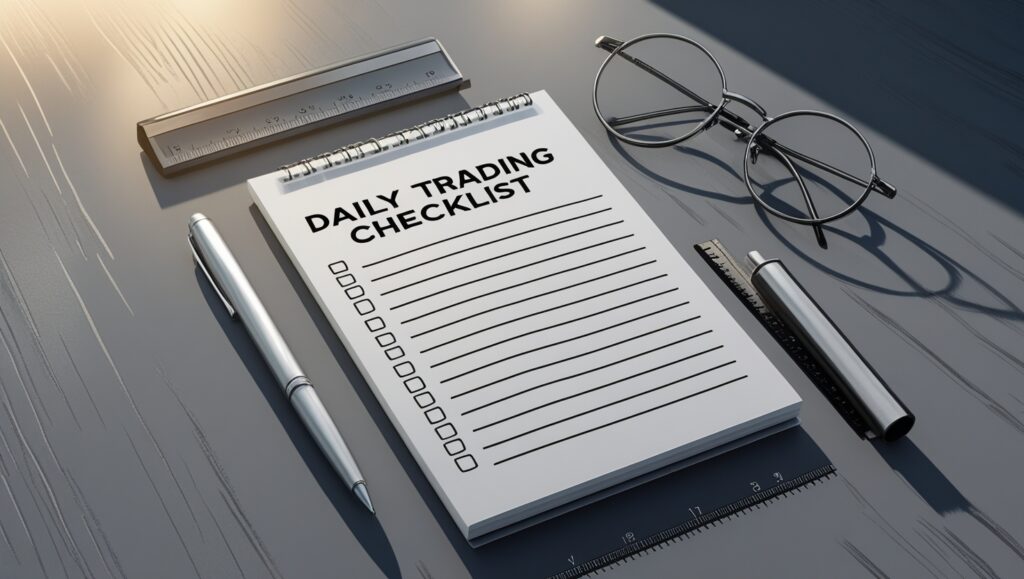
Table of Contents
Why a Trading Checklist Matters
Trading without a checklist is like flying without instruments. You might feel in control at first, but eventually the fog hits — and emotions take over. I’ve learned that the discipline to follow a plan each day is what separates profitable traders from those always chasing the next big thing.
A checklist forces me to slow down, think clearly, and only take trades that match my setup. No more guessing, no more gambling. Just structure and clarity.
My Morning Trading Routine
Every trading day, I follow a few simple steps before I even consider entering a trade:
- Review my watchlist: I stick to just 5–6 stocks I picked during pre-market.
- Check pre-market volume and news: Any major catalysts? Unusual gaps?
- Mark key levels: Support, resistance, and price zones I want to react to — not chase.
- Confirm market sentiment: Is the overall market trending, choppy, or uncertain?
- Set alerts, not emotions: I use alerts for my key levels so I don’t have to stare at charts all morning.
This routine keeps me grounded and stops me from forcing trades just because I’m “bored” or want action.
The Psychology Behind the Checklist
Most beginner traders (my past self included) make the mistake of relying on emotion or hype. What I discovered is that trading isn’t about excitement — it’s about execution. My checklist gives me a neutral starting point, even if I’m tired, distracted, or overwhelmed.
If it’s not on my checklist, I don’t trade it. That simple rule saved me from countless losses.
How My Checklist Improved My Results
When I started using my checklist daily, I noticed immediate results:
- I took fewer but higher-quality trades
- I stopped overtrading just because a stock was moving
- My confidence grew because I had a repeatable system
- My losses were smaller, and my wins were more structured
It’s not about being perfect. It’s about being intentional with every trade.
If You’re Just Starting Out…
If you’re overwhelmed with all the noise, indicators, and opinions out there — I’ve been there. That’s exactly why I created my trading ebook. In it, I walk you through my daily system, how I build my watchlist, how I enter trades, and how I stay focused without needing expensive tools.
I designed it for people with small accounts, busy schedules, and no time for trial and error. Just the exact steps that helped me go from break-even to profitable.
Another key part of my checklist is checking the broader market indexes. I don’t just jump into trades without knowing what the S&P 500, Nasdaq, or Dow are doing. If the overall market is weak or volatile, I stay cautious. If there’s clear momentum, I lean in — but only if it aligns with my setups.
I also ask myself a simple question every morning: What would a professional trader do right now? That mindset shift helps me stay calm and focused instead of falling into the habits that used to cost me money.
One of the biggest changes I made was removing randomness. If a stock isn’t on my watchlist, I don’t trade it. Period. I used to get FOMO every time someone posted a “hot” ticker — but those plays rarely fit my criteria, and I’d end up chasing.
Another essential step is reviewing pre-market catalysts. Earnings, upgrades, downgrades, and major headlines can completely shift a stock’s behavior. I don’t want to walk into a trade blind. I want to know why something is moving before I ever consider risking my money.
My checklist also includes setting price alerts, not just watching charts. That allows me to step away from the screen and avoid overtrading. I only get involved when price hits a level I’ve already planned for. No guessing. No panic.
Each night, I take 5–10 minutes to review my previous trades. I ask myself what went right, what went wrong, and whether I followed my own rules. This reflection process helps me refine my edge and stay accountable.
One underrated part of my checklist is my mental state. If I’m tired, anxious, or distracted, I trade smaller — or not at all. I’ve learned that discipline isn’t just about following setups. It’s also about knowing when not to trade.
I also prepare for the “what if” scenarios. What if the trade goes against me? What if it gaps unexpectedly? I don’t like surprises. Planning my exits and risk limits in advance takes the emotion out of the moment.
If you only take one thing from this post, let it be this: consistency beats intensity. You don’t need a perfect trade every day — you need to follow your process every day. And for me, that process is my checklist.
The more I simplified my routine, the more confidence I built. My checklist is now the backbone of my trading — not an optional tool, but a requirement. It turns chaos into clarity.
If you want the exact routine I follow each morning — including how I build my watchlist, spot clean setups, and manage trades with a small account — it’s all inside my ebook.
You don’t need to trade all day, chase every alert, or buy fancy software. You just need a repeatable process that works. That’s what I teach inside the guide — and it’s how I pay my bills with trading each month.

Stay ahead in the stock market! Subscribe to our newsletter and receive exclusive stock flow reports, trading insights, and actionable tips directly in your inbox. Join thousands of traders who get our updates first.

